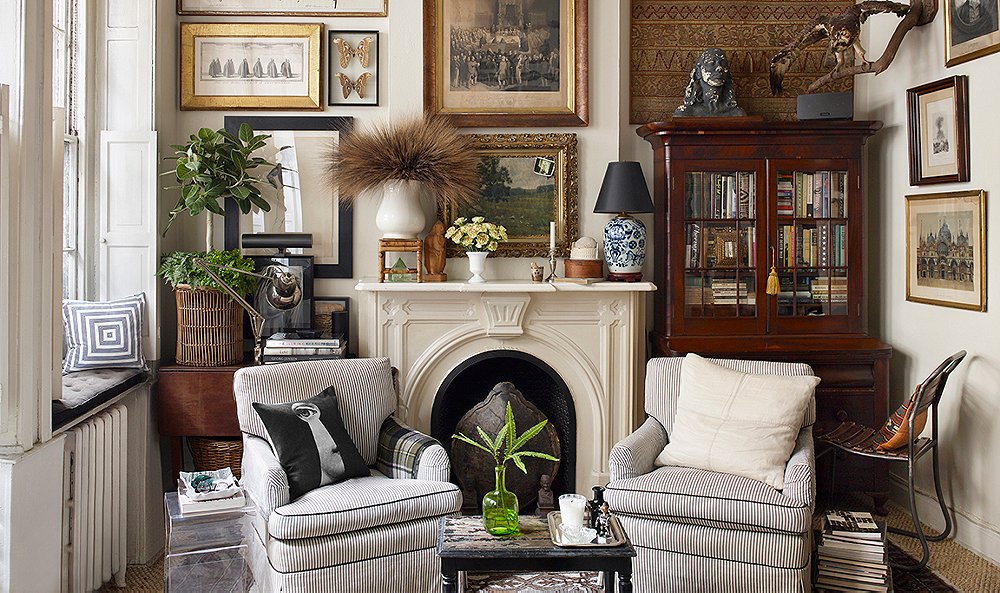
A few years ago, we had a chance to sit down with award-winning fashion designer Michael Bastian and discuss his belief that what we know as classic American style was in fact born from the confluence of three disparate societal trends. In this article we revisit that conversation and Bastian’s insightful observations of American men’s style.
If there’s one thing you need to know about Michael Bastian, it’s that when it comes to American menswear and its various influences, he is a student of history. Growing up on the East Coast and attending Babson College in the 1980s, Bastian was surrounded by a unique set of cultural forces that shaped his philosophy of and appreciation for all-American Ivy League style.
America’s Style Roots: Battlefield to Campus Quad
For Michael, the origin of classic American style (which encompasses such descriptions as Ivy League, East Coast, Preppy, and the ‘college professor’ look) can be pegged to the winding down of World War II. In the mid-1940s, young American soldiers began to flood back into the country at an unprecedented rate. Because of the newly created GI Bill, many found their way to college campuses across the country. These young men brought home with them a completely different perspective of fashion, borne of military necessity and focused on comfort.
Imbued with a more free-wheeling (for the time) sense of life, the daily wardrobe for these men was looser, tougher, more casual, and in many ways, more adaptable.
Comfortable khakis and cargo pants – literally everyday wear on the battlefields of Europe and the Pacific – were paired with more traditional oxford cloth shirts and blazers. Once seen only in the field, rucksacks appeared in classrooms hauling books instead of bullets. Sturdy military jackets, like the now-iconic M65, became standard wear.
Military gear has always had a place in the menswear space; it is after all the most masculine form of dress. But this was different. A fundamental change to the core elements of today’s American style, is directly traceable to this post-war cultural shift.
The Birth of Sportswear
Another growing influence at the time was sports. Collegiate athletics was fast becoming the new glue that bonded student to college and college to collegiate rivalries. Sportswear, inherently casual, began to work its way into everyday life, blending and melding with other active wear influences.
Today, we see polo shirts, sport coats, crewneck sweaters, and boat shoes as dressy casual office-wear. However, at the time, adoption of these preppy staples into everyday use was a fashion and cultural sea-change. Where there had previously been clear lines of demarcation between work and backyard clothing, a grey area was beginning to spread. Sportswear as an identifiable form of dress allowed for a degree of creativity and experimentation that would also lead to the more defined subset of American Preppy style.
The influence of sports and sportswear in American style continues to this day. And, with consumers continuing to blend dress and casual, formal and informal, the focus shows no sign of waning.
The Ivy League Aesthetic
Lastly, there is what Bastian calls the “Brooks Brothers” influence, which solidified these nascent fashion shifts into a new societal standard. A main stream, white-shoe influencer like Brooks adopting Harris Tweed odd jackets and Weejuns was the stamp of a new accepted menswear standard.
As the collegiate clothiers of the time, stores like Brooks Brothers, J. Press, Chip, and the Andover Shop where the foreword guard in this movement. They codified, as it were, these three disparate influences and reshaped what the world now accepts without question as the very definition of ‘American Fashion.’
Of course, American style is popular the world over. When we asked him what makes the American man’s look so classic and influential, whether in Japan or France, Michael had a simple answer.
“Two things – an appreciation of a little humor and personal style.”
Americans by nature are imperfect, and we like it that way. Go to Italy, says Bastian, and you will see sartorial perfection. Indeed, the Italian man seeks perfection; his clothing fits just so, his hair is perfect, his shoes are shined. Imperfection is a sin.
In America, we celebrate the irony of imperfection and see it as an attribute of honesty and realness.
We also like to inject our style with some humor. We like frayed edges and scuff marks. We wear lobster print shorts and embroidered belts. We want things to show age and wear, and we value the personality earned by longevity (or just being manufactured to look that way).
Today’s Take: Quality Imperfection and Heritage
With the influence of social media and online influencers, the consumer now drives what’s cool and classic. We are a nation – a planet, really – of self-styled style auteurs with instant access to trends and brands, idea-shapers, and even designers like Michael Bastian himself.
No surprise then that our wardrobes’ naturally occurring scars of life have evolved into a style goal of perfect imperfection, a sort of meta-sprezzatura.
However, notes Bastian – and we wholeheartedly agree – imperfection is not the same thing as shoddiness or being of poor quality. American style is more or less founded on the premise of New England thriftiness; the idea that you pay good money for something of high quality and then wear it to death, patch it up and wear it some more.
Quality is paramount, and for those who truly appreciate it, there is no substitute. Don’t forget, all those great preppy classics were quite expensive back in the day. They were made well and meant to last. That’s why the style cognoscenti go gaga over vintage Shaggy Dog Sweaters, WWII-era chinos, and original Yale Co-Op GANT locker-loop oxfords.
The modern reflection of this value proposition is the current trend in “heritage brands.” Numerous makers that had faded from the menswear consciousness – like Alden, Filson, J. Press – have seen a resurgence over the past several years. Many consumers again value the history of brands that communicate, and deliver, quality and meaning.
Even well-financed and smartly marketed brands with no actual history are seeking to sell their imagined roots and quality-driven aesthetic.
While Michael feels that the heritage thing has hit a bit of an apogee and is starting to trend out, true heritage brands – the ones that never placed trend ahead of quality in the first place – will continue to benefit from the renewed appreciation of value, quality, and craftsmanship.



